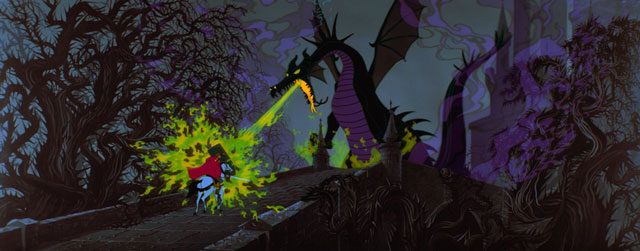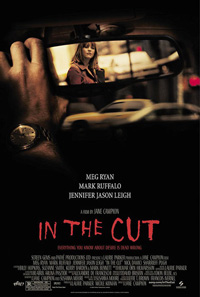By Jason Haggstrom, October 31, 2012
It’s October, and with the changes of Autumn come fall colors. Between the descending leaves and the presence of pumpkins, we’re accustomed to seeing plenty of orange and yellow at this time of year. But the Halloween season brings forth another, less natural combination of colors. It’s a union of colors that resonates with me more than any other. It’s that luscious pairing of purple & green.
I have the distinct memory of seeing Disney’s Sleeping Beauty in the theatre as a kid. IMDb lists Sleeping Beauty as being re-released in September of 1979 (it’s original run was in 1959), which would have made me 3½. Seeing that film for the first time, and in such a magnificent setting, was a formative experience.
Continue reading…
By Jason Haggstrom, October 5, 2011
Jane Campion’s In the Cut is a film designed explicitly as an example of feminist filmmaking. The film might be classified as a thriller or even a slasher film, but viewing the film with such genre expectations would only lead to dissatisfaction. In terms of plot, In the Cut is a film about a serial killer. But the film dodges narrative convention at every turn in order to present something entirely different. There are no clues to drive the audience towards a suspect; to guess at his identity would be arbitrary and beside the point of the film. In fact, the serial killer plot is relegated to the background. To view the film in terms of its plot and the conventions of the thriller genre can only lead to frustration as the film does not work through such a reading. Instead, if we are to connect with the film, In the Cut must be read as a study of the psychoanalytic theory of cinema presented by Laura Mulvey in her landmark essay, “Visual Pleasure and Narrative Cinema.” I have no intention here of providing a value judgment on Mulvey’s theories. Instead, my aim is to illustrate how director Jane Campion integrated Mulvey’s theories into her film, and then subverted them in order to strike another blow against “the monolithic accumulation of traditional film conventions” that Mulvey was so interested in breaking down. Director Jane Campion uses the language of cinema and the machinations of plot to render the film around the subjectivity of a woman, to challenge the myth of romantic love and the “cult of the female star,” and to establish a world where the male gaze is presented not as a pleasurable vantage point for the audience but a viewpoint to be feared.
Continue reading…


